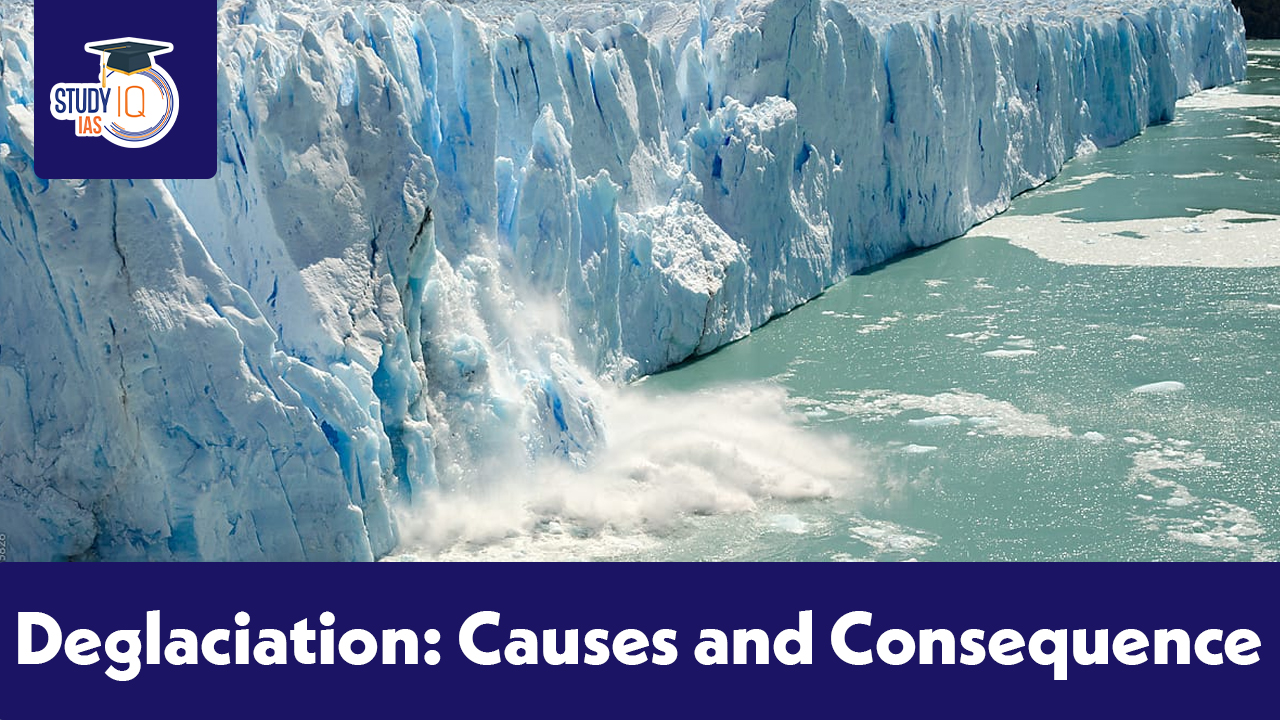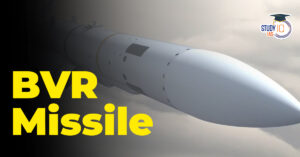Table of Contents
Context: Climate change caused by human activity under a high-emissions scenario may halve the area covered by glaciers outside the Antarctic and Greenland ice sheets by the end of the century, as per a study published in Nature.
Key Highlights of the Study
- High-emissions scenario: The report noted that under a high-emissions scenario (in which global greenhouse gas emissions triple by 2075), about half of 2020 glacier area could be lost by 2100.
- Low-Emissions Scenario: However, adopting a low-emissions scenario, achieving net-zero emissions by 2050, would reduce the glacial loss to approximately 22%.
- Emergence of New Ecosystems:
- Ecosystem Transformation: The study suggests that the decline of glaciers in regions outside Antarctica and Greenland could lead to the emergence of new terrestrial, marine, and freshwater ecosystems.
- Ecological Conditions: These new ecosystems would encompass a wide range of ecological conditions, spanning from extreme to mild.
- Impact on Biodiversity: While these changes might promote primary productivity, they could also result in the proliferation of non-native species and those adapted to specific conditions, such as cold-adapted and generalist species.
What are Glaciers?
- Glaciers are huge blocks of ice that move slowly, formed from compressed snow over centuries.
- They are mostly found in Polar Regions but can also be found in mountain regions closer to the Equator, such as the Andes.
- Glaciers hold about 2% of the Earth’s water and can take thousands of years to form, with their size changing over time.
- Glaciers cover 10% of the Earth’s surface and hold about 70% of the world’s freshwater, including ice caps.
What is Deglaciation?
- Deglaciation refers to the process by which glaciers and ice sheets recede or shrink in size over time.
- It occurs due to a combination of factors, including rising temperatures, reduced snowfall, increased melting, and calving (breaking off) of icebergs from glacier fronts into the ocean.
Causes of Deglaciation
- Global warming: Melting glaciers can be attributed to global warming caused by human activities, primarily the release of greenhouse gases such as carbon dioxide and methane from industry, transportation, and fossil fuel use.
- Deforestation: It contributes to global warming by releasing more carbon dioxide into the atmosphere while reducing the amount absorbed by trees.
- Additionally, rapid industrialization has led to glacier melting since the early 1900s.
- Natural Factors: Natural factors such as volcanic eruptions, El Niño events, and changes in oceanic and atmospheric circulation patterns can also affect glacial melting.
- Albedo Effect: The albedo effect is the measure of the reflectivity of a surface, and in the case of glaciers, it plays a significant role in reflecting sunlight back into space. However, the reduction of ice cover leads to a lower albedo effect, which, in turn, leads to more absorption of sunlight and warming of the atmosphere.
Effects of Deglaciation
- Sea level rise: Glacial melting has contributed to raising sea levels by 2.7 centimeters since 1961. Sea ice melts. This, in turn, increases coastal erosion and storm surge.
- Weather Patterns: The melting of ice eliminates the cooling effect that previously existed, causing darker patches of the ocean to emerge. This leads to warmer air temperatures and disrupts normal patterns of ocean circulation.
- Research shows that the polar vortex is appearing more frequently outside of the Arctic due to changes in the jet stream, caused by warming air and ocean temperatures in the Arctic and the tropics.
- Wildlife: Melting glaciers in the Arctic cause wildlife such as walruses to lose their home, and polar bears to spend more time on land, increasing conflict between people and bears.
- Threat to Coral Reefs: Melting glaciers and rising sea levels prevent coral reefs from receiving adequate sunlight, which is necessary for their survival. This threatens their ability to thrive through the process of photosynthesis.
- Influence on ocean currents: In addition, rapid glacial melt in Antarctica and Greenland influences ocean currents and slows them down, as massive amounts of very cold glacial-melt water enter warmer ocean waters.
- Glacier hazards: They also increase in risk related to glacier hazards due to enhanced number and volume of glacier lakes, accelerated flash flood and Glacial Lake Outburst Floods (GLOFs), impact on agro practices in high Himalayan region etc.
Pattern of Deglaciation in Different Parts of the World
| Antarctica |
|
| Greenland |
|
| Russian Arctic |
|
| South America |
|
Way Forward
Mitigation and adaptation strategies are two approaches to addressing the issue of glacial melting or deglaciation. Here are some ways to adopt each strategy:
- Mitigation Strategies: Mitigation strategies aim to address the root causes of glacial melting by reducing greenhouse gas emissions and limiting global warming. Here are some examples of mitigation strategies:
- Transition to Renewable Energy: Encouraging the use of renewable energy sources like wind, solar, and geothermal energy to reduce reliance on fossil fuels.
- Energy Efficiency: Improving energy efficiency in buildings, transportation, and industry can help to reduce greenhouse gas emissions.
- Forest Protection and Reforestation: Protecting forests from deforestation and promoting reforestation efforts can help to absorb carbon dioxide from the atmosphere.
- Carbon Capture and Storage: Developing technology to capture and store carbon dioxide emissions from power plants, factories, and other sources.
- International Climate Agreements: International agreements like the Paris Agreement aim to limit global warming by setting targets for reducing greenhouse gas emissions.
- Adaptation Strategies: Adaptation strategies aim to address the impacts of glacial melting that are already happening or are likely to happen in the future. Here are some examples of adaptation strategies:
- Early Warning Systems: Developing early warning systems to alert communities to glacial meltwater floods, landslides, and other hazards.
- Infrastructure Planning: Planning infrastructure to withstand the impacts of glacial meltwater floods, sea-level rise, and other climate-related hazards.
- Ecosystem Protection and Restoration: Protecting and restoring ecosystems that provide services like flood control and water supply.
- Community Education and Training: Educating and training communities to prepare for and respond to the impacts of glacial melting.


 DRDO and Air Force Successfully Test Ind...
DRDO and Air Force Successfully Test Ind...
 IB ACIO Recruitment 2025 Notification Ou...
IB ACIO Recruitment 2025 Notification Ou...





















